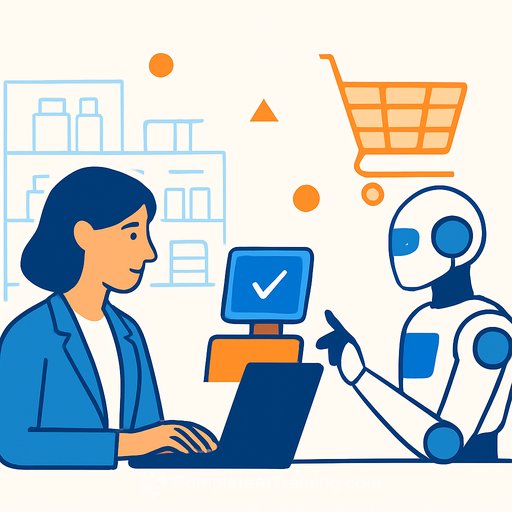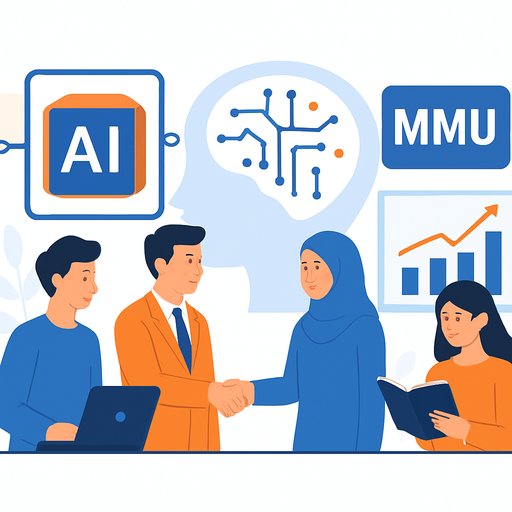NRF Europe: AI quietly takes the lead in retail
Paris hosted the first NRF Europe showcase in September 2025, drawing 500 tech exhibitors and 12,500 leaders from 58 countries. The mood was clear: AI is everywhere, but it works best when it fades into the background and makes operations sharper without stealing the show.
That restraint matters. It signals a shift from flashy demos to real outcomes-helping teams build smarter products, run tighter supply chains, and upgrade stores without breaking the flow of the business.
AI as a co-pilot, not the pilot
Narek Verdian, CTO at On, put it simply: "AI should be powerful but quiet." His teams treat it as a co-pilot that speeds up experimentation and strengthens core capabilities. That includes using AI to assist with 3D printing prototypes and iterating faster on product concepts.
This approach is spreading. The message: keep domain expertise in the driver's seat, then let AI compress time on the hard work underneath.
Carrefour's Gemini rollout: enable people, don't replace them
Miguel Angel Gonzalez Gilbert, chief digital officer at Carrefour, highlighted the company's broad use of AI across stores, e-commerce and warehouses. A recent move brings Google's Gemini to 300,000 associates worldwide to boost productivity and support daily decisions.
His stance was direct: "Technology will play a role as an ally. It's a fantastic enabler…but we do not see our employees being replaced by robots." For leaders, that framing builds trust while moving fast.
Learn more about Google Gemini
Digital twins and the new supply chain playbook
Supply chains are getting smarter with digital twins and computer vision. Nvidia has been pushing this stack to optimize distribution center throughput, and large retailers are already acting on it.
At Best Buy, Mark Irvin, executive vice-president and chief supply chain officer, described how stores now serve as hybrid fulfillment hubs, with 60% of online orders landing next-day. By building a strong data foundation first, then mapping a digital twin of the network, the team cut costs and footprint-even while carrying more inventory.
What digital twins can do in practice
Explainable innovation: risk, context, and action
The Innovators Showcase favored tools you can actually explain. TradeVerifyd maps a product's journey from raw materials to shelf, flags compliance issues, and tracks risks from weather, geopolitics and supplier failures. Real-time alerts and secure traceability help teams fix issues before they spread, and a tariffs module keeps costs in check.
Kahoona focused on anonymous users-the 96% of site visitors most teams ignore. By analyzing micro-interactions between clicks, it predicts which visitors are likely to spend so marketing can prioritize what converts. As founder Gal Rapoport noted, agentic AI needs context-and this is that context.
Unified commerce moves from project to company-wide standard
Kiko's CEO, Simone Dominici, shared how a unified commerce platform lifted customer experience across channels. The retailer partnered with New Black on its EVA platform (iOS-native, Azure-hosted) with MACH architecture for headless commerce, in-store PoS and mobile PoS.
The hard part wasn't tech alone. Pulling together 14 vendors required involving the whole company. What began as a "tech project" became an operating model shift.
AI adoption needs structure, not chaos
At Rewe Digital, chief acceleration manager Anika Vooes built an internal AI platform-data, tools and guardrails-to scale adoption. "It's like an assembly line for AI," she said. The goal: encourage experimentation while enforcing standards that improve data quality.
Leadership buy-in is non-negotiable. AI doesn't move in a straight line-it starts slow and then compounds. The sooner teams align around that, the better the results.
Stores are center stage again-with smarter tech
Research from Bain and VusionGroup shared at NRF Europe shows 75% of retail executives plan store transformations within two years, prioritizing in-store tech. Kiosks and robots once struggled to prove ROI; that's changing as retailers expect to double investments over the next three years, and 44% foresee a profit lift.
Carrefour is leaning in. With 90% of its revenue still from stores, Gilbert made it clear: digital transformation must include the store. Customer and associate expectations are rising-and that's the moment to upgrade.
What this means for retail, IT, and dev teams
- Treat AI as a co-pilot: keep experts in control, let models speed up iteration, QA and decision support.
- Start with data readiness: build a clean, connected "AI-ready" footprint before layering models or digital twins.
- Focus on explainability: choose tools that make risk, attribution and decisions transparent.
- Unify your stack: consolidate commerce, PoS and customer data to reduce friction across channels.
- Balance freedom with guardrails: define standards, governance and MLOps so teams can move fast without creating chaos.
- Don't sideline stores: prioritize in-store tech where it boosts personalization, fulfillment speed and associate productivity.
Want to skill up teams on practical AI for ops, data and product? Explore focused programs by role at Complete AI Training.
Your membership also unlocks:






